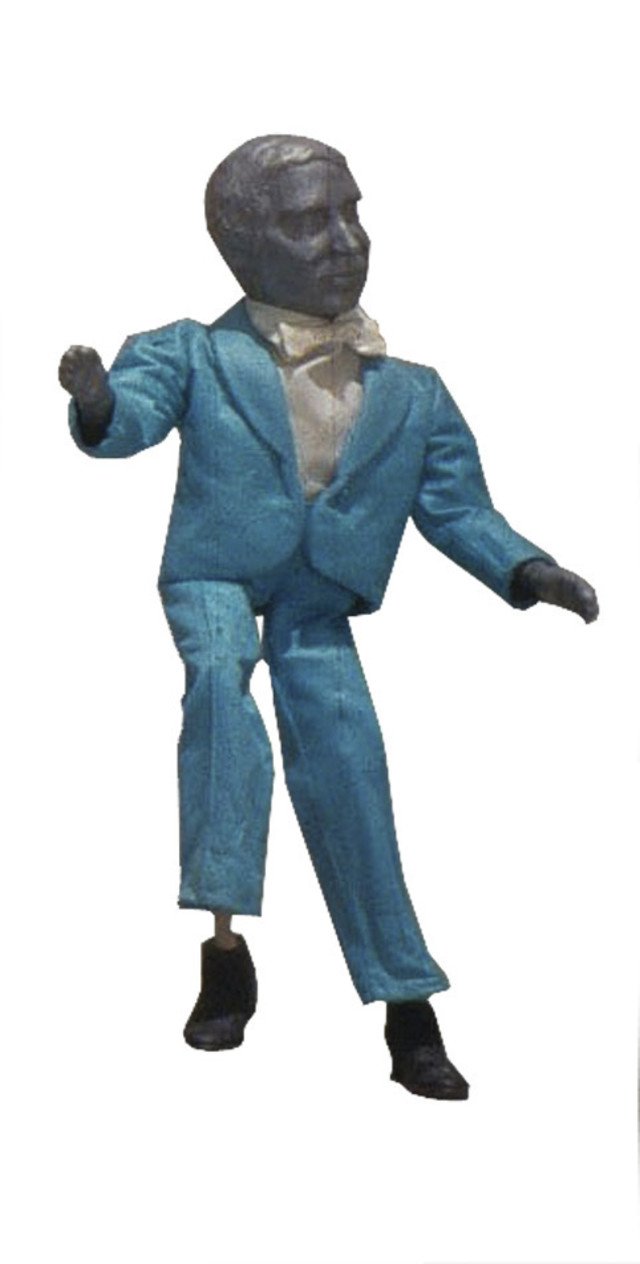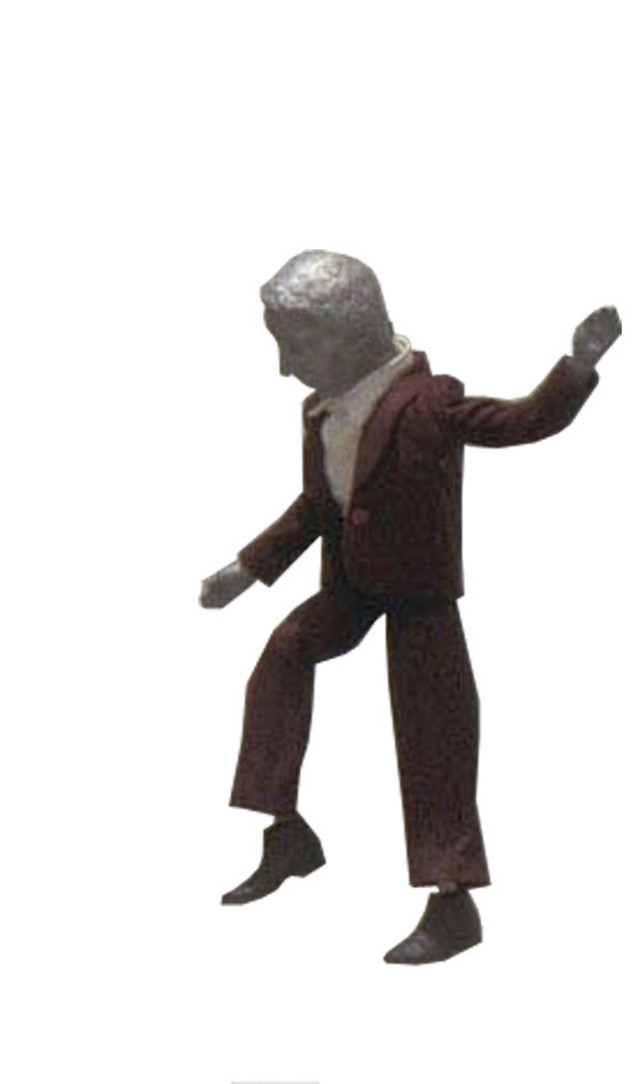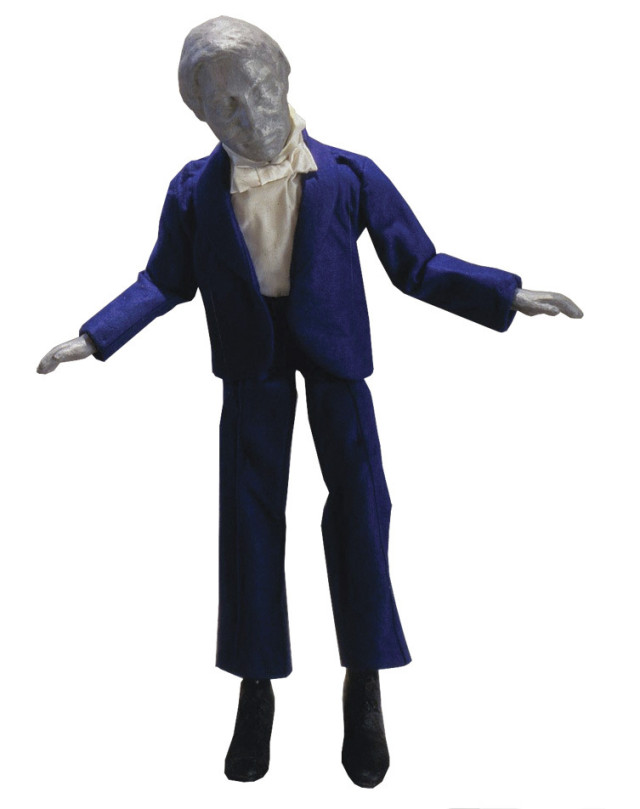Puppet People

Dennis Oppenheim’s marionettes dangle at the Frye this summer.
DENNIS OPPENHEIM DANGLED a lone marionette at a group show in a now-defunct Manhattan gallery in 1974. Over the years he added more to the installation—called Theme for a Major Hit—and, by 2001, 16 of his stringed people had been purchased by the Museum of Modern Art.
As part of the Frye Art Museum exhibit the Puppet Show this month, Oppenheim’s marionettes provide an arresting example of the power of puppetry in contemporary society—an idea 28 other artists explore in video, photography, and sculpture. Among them are such notables as stop-motion animator Nathalie Djurberg (her dark fairy tales were at the Frye through April); multigenre master William Kentridge, who recently used large-scale puppets in the local Pacific Operaworks staging of The Return of Ulysses; and Kara Walker, whose silhouette “cartoons” confront racism.

Although Oppenheim continually builds on his Theme, the concept behind it stays the same: A recording repeats the words “It ain’t what you make, it’s what makes you do it,” as motors in the ceiling carry felt-suited, 18-inch figures through a repetitive waltz. Some dance together; others stay close to a wall; another keeps its back to the rest. Their shirts eventually stain with grease traveling down the strings from the overhead motors. Clothing frays and falls apart. It’s a despairing scene that lends emotion to the stoic, blank faces—all cast in Oppenheim’s image.

“The marionette was modeled after me, so it’s as if I—the artist—am manipulated by the strings,” he explained from his New York studio. “Like a lot of mid-1970s installation art, this work is very diagnostic: It looks at the artist, looks at what’s operating and what’s behind the act.”
Strings here allude to the tug of money, competition, and other questionable creative incentives. And inanimate figures brought to life at the hands of others supply an ageless metaphor for issues of control and manipulation that trouble people just as much today as they did when Theme first debuted. “These conditions still prevail,” said Oppenheim. “Our artists are still occasionally misleading themselves and thinking they’re doing one thing when it’s really coming from a different source.”




